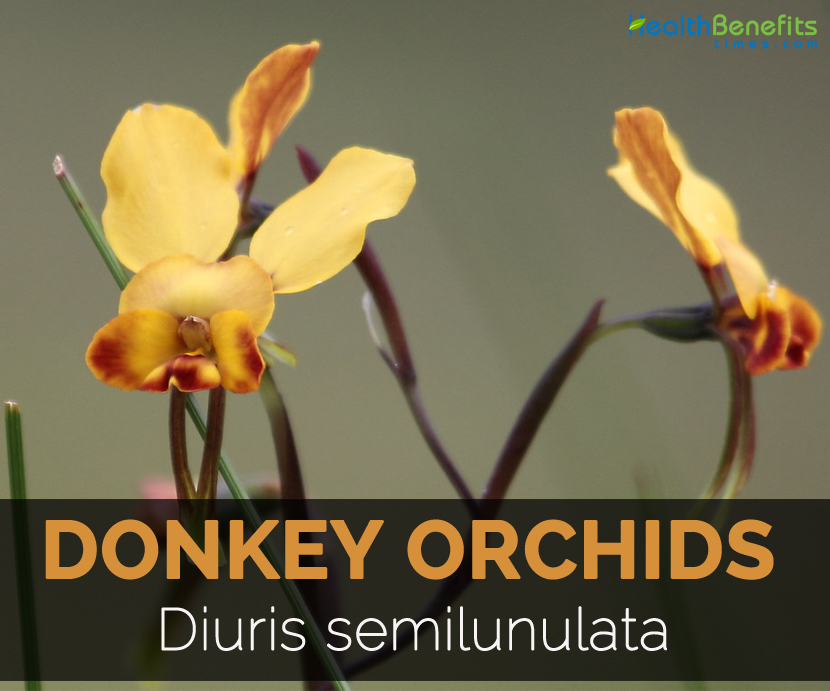| Donkey Orchids Quick Facts | |
|---|---|
| Name: | Donkey Orchids |
| Scientific Name: | Diuris semilunulata |
| Origin | Australia |
Plant description
Diuris semilunulata is a perennial, terrestrial and geophytic herb with filamentose roots having naked, ovoid or cylindrical and paired tubers. Leaves are linear, basal, grass like, 15–25 cm long and 3–4 mm wide. Scape is 3 to 5 flowered, loose raceme and 20-35 cm high. Flowers are orange, hermaphroditic, heavily blotched or suffused with purple and brown. Dorsal sepal is erect, ovate measuring 6-10 mm long and 7-10 mm wide. Petals are ovate to obovate about 5–11 mm long by 4–9 mm wide. Labellum is 4-8 mm long. Fruit is a dehiscent, non-fleshy capsule that contains 30 to 500 minute, light-dark colored and winged seeds.
Culinary uses
Aborigines consume starch tubers.
References:
https://www.orchidsplus.com/donkey-orchid-facts/
https://www.earth.com/earthpedia/plant/vi/diuris-semilunulata/
Comments
comments
